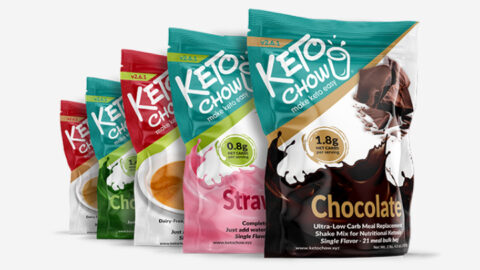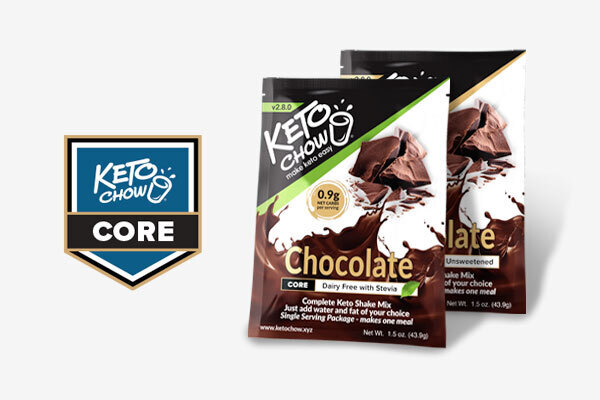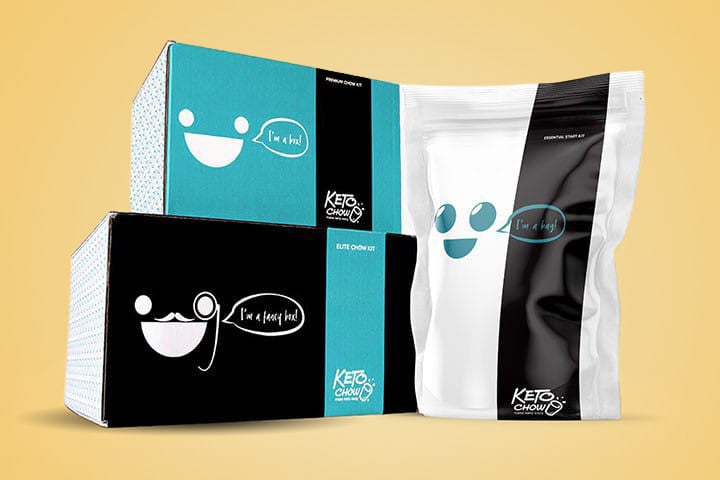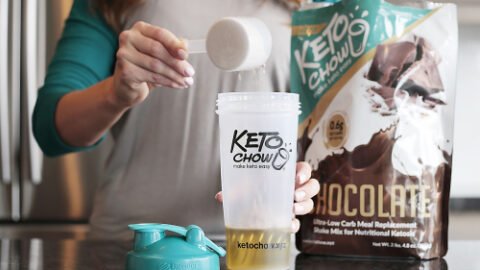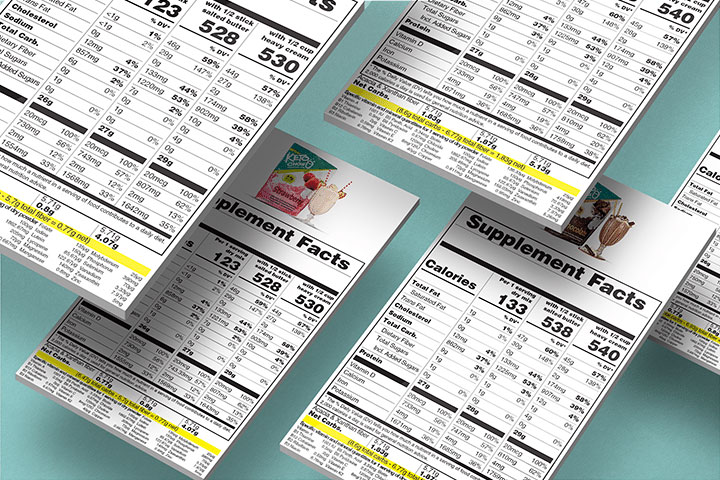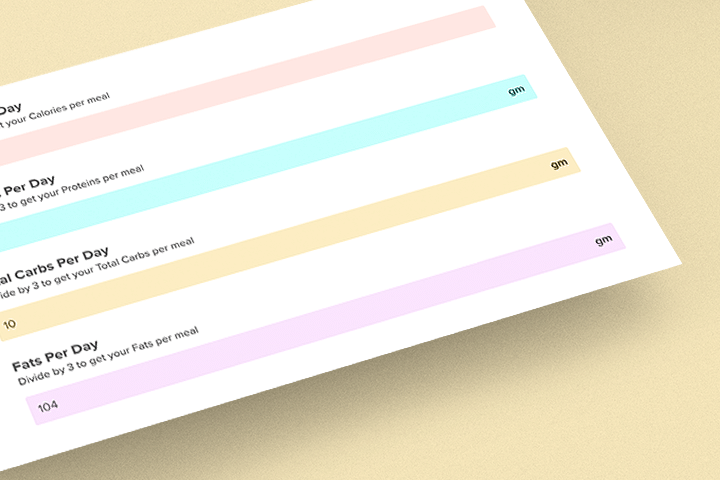People who follow keto diets (and some other diets as well) often plan their meals based on “macros.” Following macros can help you decide what to eat and how much–but what are macros, anyway? And do you need to stick to specific macros in order to get the results you want?
What’s the definition of “macros?” What types of macros are there?

“Macro” is short for macronutrient. The prefix “macro” means big or large, so macronutrients are things we consume in large amounts.
There are three macronutrients: fat, carbohydrate, and protein. These are where we get our calories from. Contrast these with micronutrients, which are things we consume in very small amounts, and do not provide calories. (Micronutrients encompass vitamins and minerals.)
When you eat whole foods, the micronutrients come packed along with the macronutrients. (You can also get extra vitamins and minerals from supplements.)
What are keto macros?

When people talk about macros on a keto diet, they’re referring to the percentages of total daily calories that come from the three macronutrients. For example, someone might follow macros of 70% fat, 20% protein, and 10% carbs.
Macros are typically provided as percentages rather than absolute grams. This means that two people who follow the same macros could be eating very different total amounts of fat, protein, and carbohydrate.
Using the example above, for someone eating 3000 calories per day, that breaks down to 233 grams of fat, 150 grams of protein, and 75 grams of carbohydrate. But for someone eating 1800 calories per day, it’s 140 grams of fat, 90 grams of protein, and 45 grams of carbs.
(Looking to calculate your macros for the keto diet? Check out this macro calculator.)
The problems with macros

The main problem with using macros to construct your diet is that keto doesn’t work through macros. The state of ketosis is achieved by keeping carbohydrate intake very low—not by any particular percentages or ratios.
(If only! If that’s how keto worked, then you could eat as many bagels or croissants as you wanted and as long as you loaded them up with enough butter or cream cheese to fit the math, you’d be in ketosis!)
The amount of carbohydrate that any one individual can eat and still be in ketosis differs from person to person, but most people need to keep it very low. Depending on how many calories you consume, a 5% or 10% carb macro might be well into a ketogenic range for you, or it might not be.
What matters for most people isn’t the percentage of calories that comes from carbs, but rather, the total amount or absolute grams of carbohydrate consumed.
Medical keto diets vs. keto diets for weight loss

Another problem with going by macros is that some online macro calculators are designed for medically therapeutic ketogenic diets rather than diets intended for weight loss, muscle building, or overall wellbeing. Very low-carb and ketogenic diets may be constructed very differently depending on what someone’s goals are.
The keto diet that works to reduce epileptic seizures in children may not be the same one that works best to help a postmenopausal woman lose stubborn body fat or that supports athletic performance in a marathon runner.
Depending on what you’re trying to accomplish with a keto diet, following macros can backfire because some of the macro calculators follow the “LCHF” (low-carb, high-fat) approach to keto. This means that they emphasize a high fat intake at the expense of a suitable protein intake.
People will deliberately restrict their protein intake to stay within their protein macro while going out of their way to take in extra fat in order to “hit their fat macro.” But going overboard on fat and skimping on protein is a common reason for stalled fat loss on keto diets.
(If you’re in this situation right now, consider ditching your macros and focusing on keeping your carbs very low while not drowning everything you eat in melted butter, cheese, or avocado oil.)
What do the experts say?

Researchers and physicians who study keto diets and who’ve used them for decades to treat patients with obesity, type 2 diabetes, metabolic syndrome, and other health issues, classify different versions of low-carb diets not by macros, but by how much carbohydrate they contain.
Some of the world’s leading experts in therapeutic carbohydrate restriction say that ketogenic diets consist of less than 50 grams of carbohydrate per day “and varying amounts of fat depending on the intended body weight goals.”1
Others have written that reduced-carbohydrate diets provide 50-130 grams of carbohydrate per day, low-carbohydrate ketogenic diets provide 30-50 grams per day, and very low-carbohydrate ketogenic diets provide 30 grams or fewer per day.2,3
The upside of macros

Even if macros aren’t the best way to design your keto diet, they can be helpful for the purpose of understanding that the majority of calories on low-carb and keto diets comes from fat, protein is second, and calories from carbs are lowest.
Even if you eat a higher-protein diet with a more moderate fat intake, the percentage of calories from fat (your fat macro) will still likely be higher than your protein macro because fat has more than double the calories per gram. (Fat provides 9 calories per gram, compared to protein at 4 calories per gram.)
It’s possible, though, to focus on lean proteins and be especially careful with fat intake and end up with more calories coming from protein than from fat. A protein-sparing modified fast (PSMF) would fit this description, as would other approaches that emphasize leaner proteins while limiting added fats and oils like butter, heavy cream, and other concentrated fats.
The bottom line

If you’re following macros and you’re happy with the results you’ve been getting, then keep going! It’s not wrong to follow macros, especially if it’s working for you. But if you’ve been trying to shoehorn your food into specific ratios and percentages and things aren’t going so well, then consider abandoning the math and getting back to the basics.
Remember: what matters isn’t having your food fit into any particular formula. What matters is whether you’re getting the results you want.
No need to track macros
If you’re looking for a meal that makes counting carbs easy, then check out Keto Chow! Keto Chow is a low-carb, high-protein meal replacement shake that has 1/3 of your daily recommended nutrients. Choose from over 30 flavors that only take minutes to prepare!
Sources:
- Volek JS, Phinney SD, Krauss RM, Johnson RJ, et al. Alternative Dietary Patterns for Americans: Low-Carbohydrate Diets. Nutrients. 2021 Sep 22;13(10):3299.
- Society of Metabolic Health Practitioners. Clinical Guidelines for Therapeutic Carbohydrate Restriction. Published February 2022.
- Cucuzzella M, Riley K, Isaacs D. Adapting Medication for Type 2 Diabetes to a Low Carbohydrate Diet. Front Nutr. 2021 Aug 9;8:688540.
